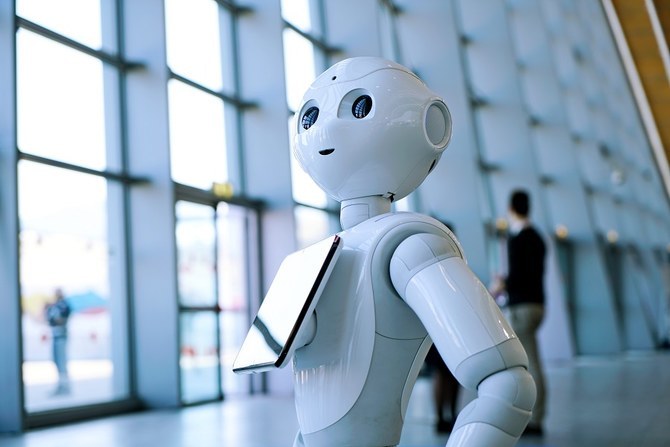
- ARAB NEWS
- 14 Jul 2025

With significant advances in Artificial Intelligence (AI) and robotics applications in many services, the question arises whether the future of banking services will be in the hands of robots, or will humans still have a role to play?
Some countries with a penchant for using advanced technology, especially in Asia, seem to be opting for robotics, exemplified by Shinhan Financial, which owns South Korea’s oldest and second largest bank, which introduced virtual robots as bank tellers. Shinhan relied upon Samsung’s AI programs called Neons. Copying humans, the virtual robots smile and answer customer queries with a mixture of speech and gestures.
Is this the future or is it particular to certain cultures and societies? Many studies carried out among the tech savvy “Generation Z” expect clients of this generation to use Fintech and remote banking instead of visiting physical bank sites. But South Korea was not the first to go into this field of robotics — Japan’s SoftBank launched a robot called Pepper in 2015, which was branded as the first commercial machine for businesses to be used for customer interaction.
Pepper’s child size and button-eyed features made it endearing to many customers as it did not project a fearsome robotic presence that most often makes humans anxious. SoftBank is still promoting Pepper in the Middle East. While some might dismiss Pepper as a gimmick, more than 2,000 global companies have adopted the SoftBank machine to welcome, guide or inform clients making it an additional effective marketing tool to attract the younger generation.
Not to be outdone, UK-based Engineered Arts has created a humanoid robot called Ameca, with somewhat creepy expressions of happiness, confusion, sorrow and amazement. The robot is still unable to walk at present and is only being manufactured for entertainment and special events.
Others have gone even further. The French robot developing company Aldebaran has also stepped in with its own diminutive robot called NAO, embedded with sensors, bumpers, autonomous navigation and a touch screen. HSBC was the first bank in the US to use it for teaching customers how to open an account while having fun doing it, rather than interacting with a tired or sullen human employee.
The question remains though: Have humanoid-type robots been effective? In some respects, the answer is positive, as some of these robots have been transforming the way banks and other service sectors do business across multiple functions, simplifying many applications. Making such robots multilingual only adds to the general excitement. But there is also resistance to the robot invasion, as a robot’s capability to think and feel like a human can induce human distrust and fear, well exemplified in such Hollywood movies as “A.I. Artificial Intelligence,” and “I, Robot.”
Regardless of our fascination with AI advances, humans are still humans and may prefer to interact with other humans who they trust to share information and make decisions. In addition, there might be a chance that “feelingless” robots might steer customers into making riskier choices. There are also some religious concerns that by creating robots in their own image like gods humans are stepping into unknown moral and ethical territory. Others might argue that robots can carry out many tasks more diligently than humans, giving more time for humans to focus on other areas of their lives.
Despite the misgivings, the advances in humanoid robotics continue apace, including the human-like robot Sophia developed by Hanson Robotics, seen first during Saudi NEOM’s inauguration, and which became the first AI in history to be given a legal personhood and granted a Saudi citizenship. It did not stop with Sophia, as NEOM’s future developments are expected to be so advanced that the founders believe that robots will outnumber humans in many activities, having a role in critical areas such as advanced manufacturing, genetic engineering and medical innovation, where AI has already proved a blessing.
In the face of all this, what can banks do in response to the advances of the robotics industry? Up-skilling their staff, more effective and friendly customer services, and multi-tasking could be a start.
• Dr. Mohamed Ramady is a former senior banker and Professor of Finance and Economics, King Fahd University of Petroleum and Minerals, Dhahran.